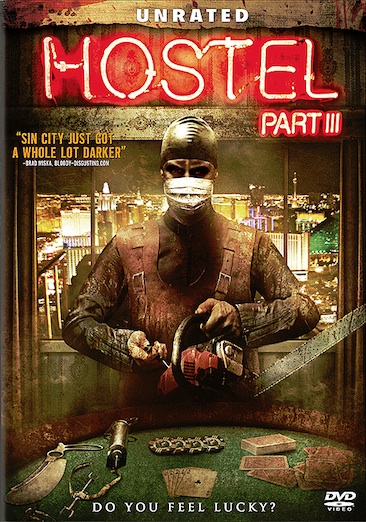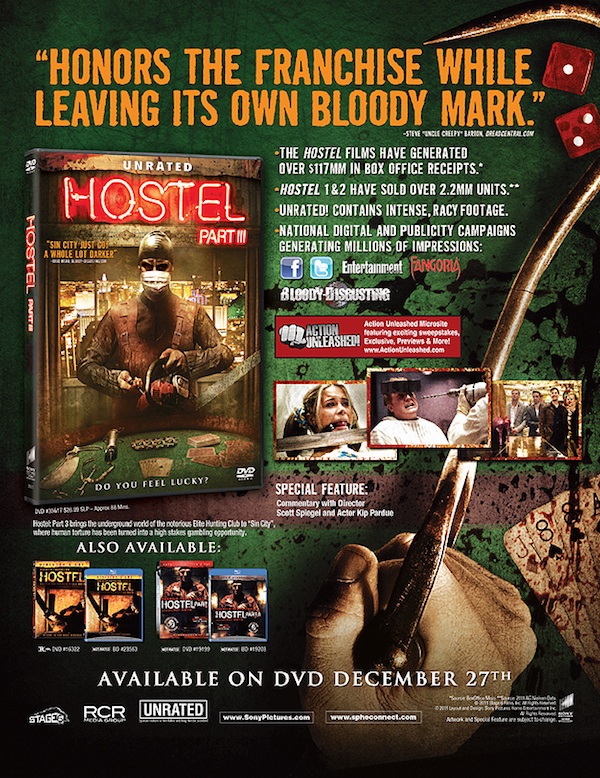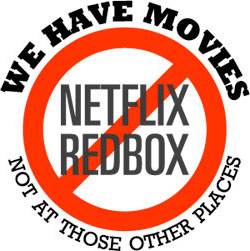'Hostel: Part III' plays an intriguing game with the MPAA -- UPDATED with art and trailer
Posted Monday, October 17, 2011 at 3:54 PM Central
Last updated Monday, October 17, 2011 at 7:51 PM Central
by John Couture

It's no secret that Tim and I aren't the biggest supporters of the MPAA. From time to time, we even feel the need to scratch the itch and write a bit about the nebulous organization that impacts our movie-going experience more than any other factor out there.
A few years ago, I went off on a little rant about how film producers for Terminator Salvation were aiming for a PG-13 rating, despite all of the previous films in the franchise being firmly in R territory. Their argument at the time was a prime example of "ratings creep" where movies rated today contain more objectionable content at each rating than they would a decade or two ago and not a conscious decision to aim for a lower rating to capture a bigger audience.
Terminator Salvation grossed just north of $125 million and while that's certainly a lot of money, it was considered a failure to such an extent that the future of the entire Terminator franchise is in doubt. Maybe it was just a bad movie after all. Who knows?
One of my duties here at the site is to take the weekly (or so) bulletins from the MPAA and designate the ratings and CARA reasons for those ratings on the individual movie pages. On the ratings bulletin from August 17, 2011, the MPAA issued a rating of R for Hostel: Part III for strong bloody sadistic violence and torture, sexuality/nudity and pervasive language.
Now, Hostel: Part III is a direct-to-video chapter of a bloody, mature themed horror franchise, so this rating didn't come as much of a surprise to anyone. What was surprising to me at least was why this movie would even be subjected to the rating process?
With almost 15 years of experience in the home entertainment industry, I knew that Sony was going to release the DVD and/or Blu-ray as "Unrated." In fact, the "Unrated" designation will probably help this particular title as it gives Sony the ability to plaster "Unrated" all over the box art.
But my question is why even subject it to being rated in the first place if this was the plan all along? I mean "Unrated" is the same thing as "Not Rated" isn't it? Or are we getting into a debate of semantics?
Tim suggested that it might actually be a bit of legal wrangling over the use of the term "Unrated." He believes that the terms "Not Rated" and "Unrated" are not interchangeable and that only movies that have previously been rated by the MPAA can use the term "Unrated." Everything else is "Not Rated."
I can buy that, although I know that studios are still using the terms interchangeably and there is a lot of confusion about it in the consumer marketplace. There's also confusion because many studios simply release all of their DVDs and Blu-rays as "Unrated" because it's simpler to do so and besides there is a certain marketing appeal to an unrated edition.
Don't believe me? The next time you're in a store on the week a big R rated movie streets in which there's a choice between a "Theatrical Rated Version" and an "Unrated" version, count how many of each are sold. The discrepancy is so big that Warner Bros. has ditched the "Theatrical" version altogether for the release of The Hangover Part II and simply is releasing one "Unrated" version.
For the original The Hangover there were two versions.
So, that brings us back to Hostel: Part III. Perhaps the film needs its rating for some real purpose such as VOD or the like, but I'm betting it probably got rated simply so it could legally split hairs between "Unrated" and "Not Rated."
While there are many factors that go into the price of having the MPAA rate a movie, the scale ranges roughly from $2,500 to $25,000. Some of the factors that determine the amount include whether it's a new certification or a re-certification, a theatrical release or a direct-to-video release, etc. Regardless, it costs a significant amount of money to rate a film and can that cost really be justified to not even use said rating?
They might reap the benefits from this little mind game, only time will tell. But for now, the real winner is the MPAA because they get paid to issue a rating that no one will ever see unless you're reading this article. If Hostel: Part III proves successful (and all indications are that it will be), then it might start a domino effect where more direct-to-video movies will get rated simply to not use said rating.
That to me sounds like the complete antithesis to the reason that the MPAA exists. But, I'm sure you won't see the MPAA turning down the money to rate movies simply so they can be released "Unrated."
The artwork and trailer are now official
That didn't take too long. Sony released the official box art this afternoon and as I suspected, the term "Unrated" is clearly marked across the top. Not only that, but Sony is clearly marketing the "unrated" aspect on their sales materials.


Also, I dug up the trailer for Hostel: Part III courtesy of Film School Rejects to give you all a little glimpse of what is to come.





